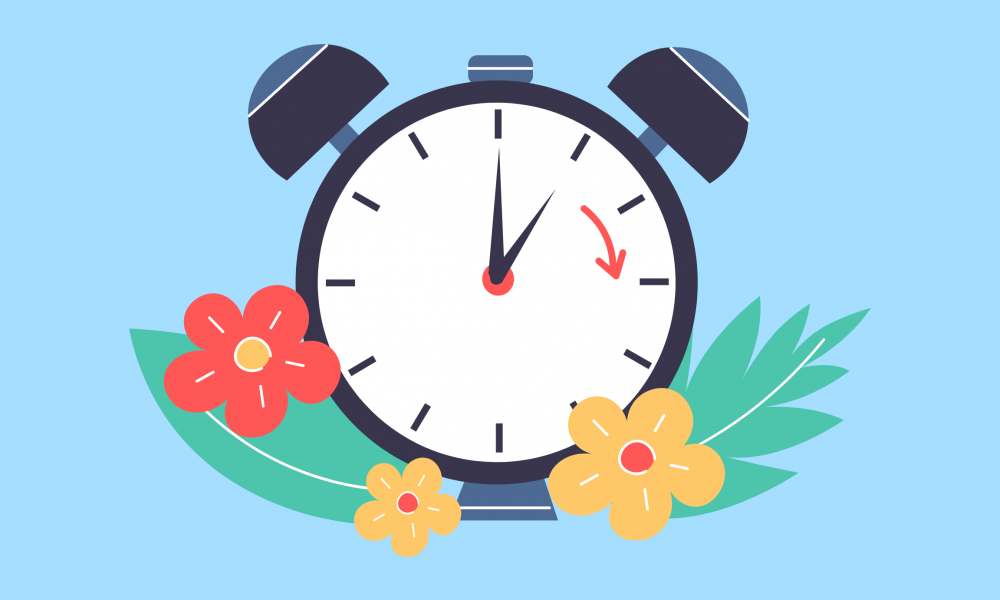The gratefully anticipated daylight savings began on March 13. Daylight Savings Time (DST) occurs on the second Sunday of March, requiring Californians to set their clocks forward an hour.
It marks the beginning of long evenings accompanied by summer and it provides us with more sunshine.
I’m sure the majority of Gen Z has been overwhelmed by the amount of TikTok videos and memes on Instagram enthusiastic about the long, warm summer nights. We wait patiently for this time of year during the winter, so why not make it year-round?
Californians have attempted to have this done by passing Proposition 7. Proposition 7, a ballot measure to establish permanent DST or year-round standard time, was passed in 2018 by 59.75% of California voters.
But these permanent changes have not occurred in California because of the federal Uniform Time Act. This federal act only permits states to adopt DST during March (spring forward) and in November (fall back), or the establishment of standard time.
It does not allow states to establish permanent DST for long periods of sunlight in the evenings year-round. That is unless Congress passes a bill allowing for this change to occur with the required two-thirds vote.
So, let’s push our legislature to make this happen.
It’s a nuisance to continue with the time change. Standard job hours are 9 a.m. to 5 p.m. which leaves no time for Californians to spend time in the sunshine after a hard day’s work during the winters when we fall back.
Has Congress ever heard of SAD?
Seasonal Affective Disorder (SAD) is experienced by nearly every college student I know. When people don’t receive enough sunlight, it causes a biochemical imbalance in their brain leading to feelings of depression, according to John Hopkins Medicine.
Maybe these “winter blues” would be lessened if Californians actually got to experience daylight during the winter months.
Senator Marco Rubio (R-F), crafted the Sunshine Protection Act of 2021 to establish permanent DST, arguing that Americans should not have hassle with changing the clock, suffering from sleep loss and seasonal depression.
He and other senators, like Sheldon Whitehouse (D-RI), have stated that getting rid of 5 p.m. sunsets and establishing brighter afternoons all year round would make people more productive, well-rested, and happier.
Research shows that people exercise more, experience fewer car accidents and robberies during DST. Having a consistent sleeping schedule, without the time changes, could reduce heart problems and stroke.
According to the National Conference of State Legislatures, 18 states have passed legislation to permanently make the switch to DST. The latest are Alabama, Georgia, Minnesota, Mississippi, and Montana; which all enacted legislature in 2021.
As of March 15, the U.S. Senate unanimously passed the Sunshine Protection Act sponsored by Sen. Rubio, making DST permanent across the United States. But the bill must pass through the U.S. House of Representatives in order to become permanent.
There are plenty of opponents that argue that established standard time year-round would better align with our natural circadian rhythm, but these claims are sometimes contradictory.
Most of the younger generation wakes up later and goes to bed later than previous generations. Preferring more light in the morning during the winter months does not suit us anymore.
Also, this is not the 1900s and most of us are not farmers who need more morning light hours.
Another argument opponents state is that establishing DST will harm children by losing critical morning light, where it could become dangerous for children to walk or bike to school.
While this should be considered, it’s also important to consider that majority of American children do not walk to school anymore.
A report in 2016 from the CDC found that 10% or fewer students walked or biked in the mornings on an average day versus 48% in 1969, according to the National Center for Safe Routes to School.
It’s 2022 and based on the historic decline, we can all assume that the percentage now must be lower.
So not only does the safety argument for children fail, but it’s even beneficial because DST supports increased exercise during the day in children, according to the International Journal of Behavioral Nutrition and Physical Activity.
If we end the transition in and out of DST, it would cease sleep disturbances and sleep deprivation while establishing a schedule that we can stay adapted to.
I’m advocating for permanent DST. Longer evenings give Californians more time to spend going out in the lighter hours after long days at work and school.
After all, we do pay to live in the sunshine. It’s time to lock our clocks and establish DST.




